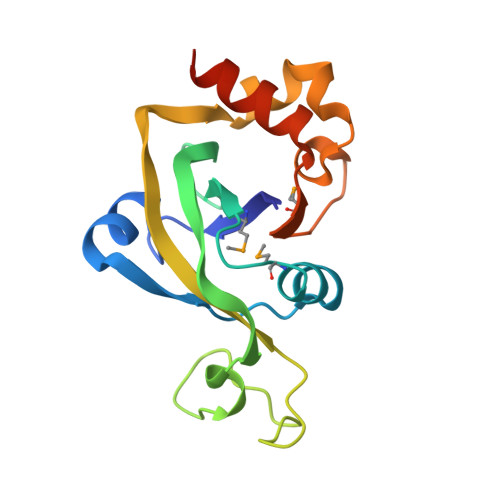Structural genomics reveals EVE as a new ASCH/PUA-related domain.
Bertonati, C., Punta, M., Fischer, M., Yachdav, G., Forouhar, F., Zhou, W., Kuzin, A.P., Seetharaman, J., Abashidze, M., Ramelot, T.A., Kennedy, M.A., Cort, J.R., Belachew, A., Hunt, J.F., Tong, L., Montelione, G.T., Rost, B.(2009) Proteins 75: 760-773
- PubMed: 19191354
- DOI: https://doi.org/10.1002/prot.22287
- Primary Citation of Related Structures:
1ZCE, 2EVE, 2G2X, 2GBS - PubMed Abstract:
We report on several proteins recently solved by structural genomics consortia, in particular by the Northeast Structural Genomics consortium (NESG). The proteins considered in this study differ substantially in their sequences but they share a similar structural core, characterized by a pseudobarrel five-stranded beta sheet. This core corresponds to the PUA domain-like architecture in the SCOP database. By connecting sequence information with structural knowledge, we characterize a new subgroup of these proteins that we propose to be distinctly different from previously described PUA domain-like domains such as PUA proper or ASCH. We refer to these newly defined domains as EVE. Although EVE may have retained the ability of PUA domains to bind RNA, the available experimental and computational data suggests that both the details of its molecular function and its cellular function differ from those of other PUA domain-like domains. This study of EVE and its relatives illustrates how the combination of structure and genomics creates new insights by connecting a cornucopia of structures that map to the same evolutionary potential. Primary sequence information alone would have not been sufficient to reveal these evolutionary links.
Organizational Affiliation:
Department of Biochemistry and Molecular Biophysics, Columbia University, New York, NY 10032, USA. claudia.bertonati@uniroma1.it
















